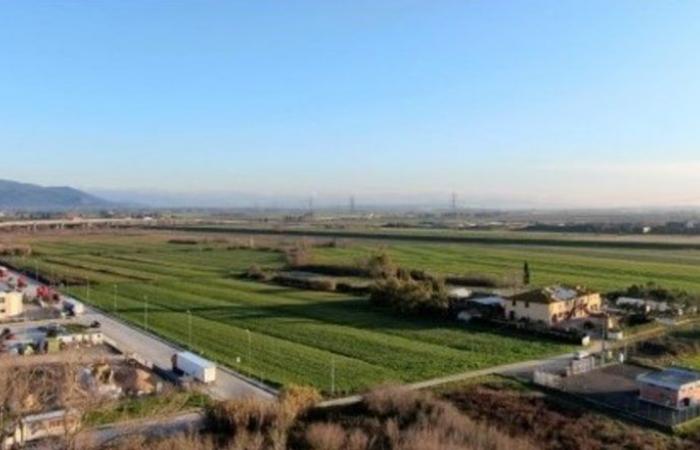A cube that will occupy the surface of 13 football fields and is taller than a normal bell tower; an intervention area of over 37 hectares which will be largely concreted over, almost as much as the entire town of Cenaia, the largest hamlet in the municipality of Crespina-Lorenzana (PI).
These are the figures of the “Citadel of Logistics”, a gigantic Ecomonster, which should be built in Lavoria and for which the approval procedures are moving forward quickly, without the City Council ever having expressed its opinion on the subject, not even to dictate to some timid address, or to remember the alarm of the latest SNPA report on land consumption, and the world day to fight desertification (17 June).
The project, subjected to Strategic Environmental Assessment, “forgets” to consider, in addition to the enormous land consumption, the effects on traffic, the lack of purifiers and an adequate sewerage network throughout the area, the proximity of several hectares of soils contaminated by years of indiscriminate spreading of sewage produced by the intensive pig farming “Torre a Cenaia”, still in disuse and never reclaimed, the proximity to the Gello landfill: all elements that already burden the territory on which the Ecomostro would be built.
Furthermore, the waterproofing of various hectares of land that would be achieved by carrying out the project, compared to the hydraulic risk of a flood plain with medium hydraulic danger, would add to the effects of other more or less recent urbanisations, and of plan forecasts which do not intend stop the land consumption of future projects, an aspect that goes against the trend of national and community guidelines which increasingly impose a limitation on the use and consumption of land in municipalities.
The project then does not evaluate the possible polluting effects due to the run-off of the approximately 10 hectares of storage, movement and maneuvering areas for heavy and non-heavy vehicles which, without the provision of a rainwater treatment or washing system, will be channeled directly into tanks ” with a grassy bottom”, where a whole series of polluting substances such as hydrocarbons, solvents, paints and other chemical substances transported in the same untreated water will be deposited, which will then be absorbed by the ground, potentially contaminating the waters below; in addition to this, next to the aforementioned tanks a sewage disposal plant will be built with phytopurification treatment and subsequent dispersion of the sewage into the ground, while there is no mention of the disposal of wastewater resulting from unspecified types of processing. This is a serious deficiency, also given the proximity of the “Cenaia wells” field consisting of six underground water collections intended for consumption, for which it is necessary to avoid the risk of contamination resulting from inadequate management of pollutants.
The processes envisaged in the structure as reported in the various documentation present in the documents are described in a very generic, vague and incomplete manner, and indicated approximately as assembly, surface treatment and painting activities, but the dimensions of the structure, which allocates 7 approximately hectares of surface for processing and the area of a football field for carpentry alone, suggest a set of activities linked to important production and finishing processes, which would be good to know and explore in greater depth in order to be able to adequately evaluate their effects.
The Environmental Report was also recognized as lacking in many aspects relating to air, energy, water, waste, nor are there currently any guarantees on the possible end-of-life of this mammoth structure: in the event of disposal, what will become of the 20 hectares cemented? And all the rest of the equipment, how will it be recovered and by whom?
As Legambiente, together with the Orizzonte Comune Association, we have asked the Municipal Administration to suspend the Evaluation procedure until the knowledge and planning frameworks are adequately integrated and completed with the missing parts. For an intervention of this magnitude that impacts disproportionately with respect to the territory on which it will insist, we believe that before taking on obvious risks and inconveniences for the community that could last and burden it for a long time, the institutions and the local community must necessarily examine the most impactful aspects of the project and possibly propose the necessary adjustments, without any preclusion, in the interest of all citizens, including the possibility of not accepting the proposal.
There is no way a project like this will go ahead with resolutions of the municipal council voted by a few people: it is necessary that it be described and explained in public assemblies, open municipal councils and if necessary, with an adequate participatory process.
Pontedera and Crespina, 14.06.2024
Follow Legambiente Valdera on FB
Photoinsertion, view from the south. Source: Landscape-environmental insertion study, Crespina-Lorenzana Municipality
The original article can be read here






